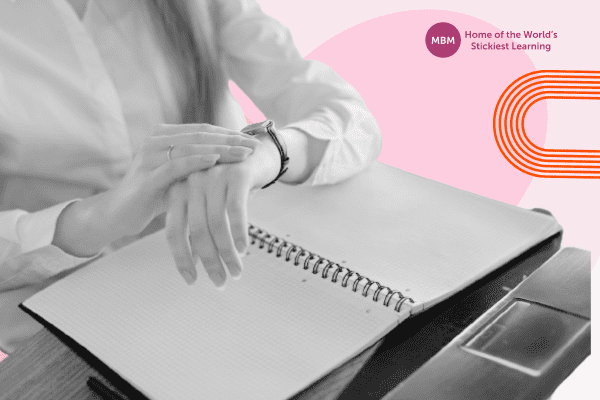Creating a Better Understanding of Stephen Covey’s 7 Habits for Today’s Workplace
Today, we will look at a revisited version of Stephen Covey’s 7 Habits. Do you know what they are? Probably not. And, that’s the problem.
I asked over two dozen people recently who had read the book. But none could tell me even one. They knew the concepts or general ideas. However, they didn’t know the actual habits. Be honest. Who remembers “Synergise” or can explain it? Which habit number is it? Exactly!
Here, we want to make the habits easier. We love Stephen Covey’s 7 Habits. And, we want more people to apply them.
This article in no way tries to replace Stephen Covey’s 7 Habits. In fact, the whole purpose of the article is to reinforce all of the habits with a different way of remembering and using them.
History of Stephen Covey’s 7 Habits
So, where did Stephen Covey’s 7 Habits come from? Actually, they are the principle elements for the 1989 book “The 7 Habits of Highly Effective People”. The book is known for its multiple focus areas. Self-leadership, collaboration, balance, and efficiency are all primary concepts of the book, and therefore, the habits. Some consider it a self-help book. Others think of it as a great leadership guide. Either way, there are great ideas in it that can still be practised over 30 years later.

Stephen Covey’s 7 Habits are used around the world. I have used them myself in many sessions of leadership. However, I find that the actual habit definitions can be difficult to retain.
For example, I trained a recent group and in the assessment, they were asked for the 1st of the habits. Unfortunately, 7 out of 10 chose the wrong option. Perhaps they simply hadn’t studied enough! However, I believe that the habits need to be simplified to be remembered and used more.
Stephen Covey’s 7 Habits Revisited
So, I decided to revisit Stephen Covey’s 7 Habits. I want to see if they can be more easily used. We need to understand them for today’s workplace. There is a new way to understand and remember the habits for better results. First, let’s see the overview of each. Next, we will look at the details. Then, we will understand how to apply them, linking them back to Steven Covey’s 7 Habits. I hope that these practices will help you apply Stephen Covey’s 7 Habits. Also, I hope you see real results from using them.
Overview of E.M.P.O.W.E.R for Steven Covey’s 7 Habits
To best use the habits, we have to E.M.P.O.W.E.R.
- E – Energise
- M – Measure
- P – Prioritise
- O – Opportunities for All
- W – Wait, Then Share
- E – Engage
- R – Revitalise
Let’s see how they all work in line with Stephen Covey’s 7 Habits.
Sticky Learning ® is 7 times more effective than 1-day training courses. Plus, you will get a Chain of Evidence proving your Return on Investment. Discover soft skills training that changes behaviours long term.

#1- Energise

So, the first of the habits is “Be Proactive”. But how do we best do that, you might ask? Think of your team. Now, consider them at their best. What does it look like? How does it sound around the office or workplace? They show certain key characteristics that get results. Some of the characteristics are:
- Motivation
- Collaboration
- Enthusiasm
- Belief in the product/service
- Direction
In other words, they are energised. Actually, teams are most proactive when they have a vision. We all need goals to work towards. And these goals energise us to push forward and achieve results.
Reactive work from our team happens when these characteristics are missing. We wait until something happens. Then, we react. Whereas proactive workers use teamwork and leadership to move forward without waiting to be told. They are energised to do more. Also, they don’t settle for just the basic amount of work.
As leaders, we need to energise our team. There are a number of ways we can do that.
1- Create an understanding of the goals:
Your team will be more proactive and productive. Ensure they know what the end results are. Also, allow them to share their feedback on the process.
Ensure there is buy-in. Next, create buy-in and belief in the task at hand. Explain everyone’s role and responsibility. Also, hold them accountable. So, they know what the task is and why.
2- Develop a comfortable workplace:
Now, ensure that the work area is conducive to energise the team. There are many activities you can make happen here. Hold brainstorming sessions. Also, have creative tasks for people to develop their ideas. Share recognition and compliments that encourage motivation.
So, now we can energise our team in different ways. Next, let’s look at Measures.
#2- Measures

Next, the second of Stephen Covey’s 7 Habits is “Begin with the End in Mind”. So, targets need to be in place to work towards. We mentioned briefly in Energise about having goals and targets. Now, we will look at this step in more detail.
To be effective, we need to have direction. Goals and targets allow us to have that. However, these goals can only be achieved if we have a way to measure their success. Imagine you are developing a particular product. Now, think about how you know if your product is effective. You will need to have measures in place to aim towards.
Remember, the team needs to know what those measures will be. I can speak from experience on this habit. Holding both training and quality management roles, you need to show the purpose of the training. Using quality measures allows you to check the effectiveness of the training.
For example, I trained in Leadership recently. The measure was a minimum score in their final assessment. This was explained on the very first day of the training programme. Therefore, the team knew what the end result was throughout the training. Also, they knew the final expectation for receiving their certificate.
The measures can be practical or theoretical. However, leaders need to explain these measures and expectations from the start. Different measures we can use include:
- Expected timeframes
- Percentage of defects
- Level of customer satisfaction
- Revenue generation
- Scores for assessments
There are many measures out there. So, consider your own company and your needs. Then, decide on the best measures you can use to rate success. Next, communicate these to your team from the start of the task or project. Finally, share the results with the team openly.
#3- Prioritise

The third habit is “Put First Things First”. In other words, prioritise. In Stephen Covey’s 7 Habits, this one always surprised me with the choice of wording. Surely, it would have been easier to remember simply by having prioritised as the habit. Just my opinion.
Actually, this habit is harder to do than it sounds. How do we know what to prioritise? In Stephen Covey’s 7 Habits, he discussed the 4 quadrants of urgent and important. Here, we will show a summary of that concept. It will allow you to better prioritise your tasks. This in turn leads to better productivity as well as achieving your goals.

1) Urgent / Important – Do it Now
Here, look at the emergencies you need to deal with. These can include:
- Any type of crisis – for example, fire emergency, accident or injury at work, etc.
- Customer complaints – these need to be dealt with NOW.
- Final deadlines – these might be urgent last-minute requests or the last day of the agreed deadline for a task
These tasks you do first. So clear them as soon as you can. Then, make sure they are addressed. Also, don’t avoid them. Instead, tackle them head-on with energy and clear thinking. Don’t panic, even if you feel rushed. Remain calm and the results will be better. This stage can be very stressful for everyone. So, make every effort to reduce the stress by using quadrant 2 more. Let’s have a look.

>> Stress Management Coaching Cards <<
2) Not Urgent / Important – Schedule it and Make Time for it
Here, we have the tasks that allow time for us to complete them. Some examples include:
- Strategic planning
- Learning and development
- Relationship building
- Preventative activities
This is where we want to spend most of our time. We have the time to plan and are less stressed. For example, firefighters spend the majority of their time here. Then, they are better prepared for the emergencies they face. Spend more time planning and strategising. That way, you can handle any emergencies better.
3) Urgent / Not Important – Delegate It
So, we all have some smaller tasks that we keep on our to-do list. This is for a number of reasons such as:
- Tasks we enjoy
- Nobody has been trained to handle them
- We have nobody we can trust to do it
Now, we need to let go of some of these tasks. That will free up time for more of the scheduled tasks. Delegate more. Prepare others in the team to handle these tasks. And, let go.
4) Not Urgent / Not Important – Remove It
These are the time waster tasks that distract us. Some emails and calls fall under this area. Also, even some meetings and what we call “busy work’. Some can be very enjoyable. That can be a reason we spend time on them, to have a release from the tougher tasks. We need to be responsible and release these tasks. Understand that these tasks do not help you achieve your goals and eat away at your time.
So, understand these areas where we need to spend our time. It will help you prioritise more effectively and get better results across the board. Good luck!
#4- Opportunities for All

Now we have the 4th habit, “Think Win/Win”. In Stephen Covey’s 7 Habits, this habit talks about interdependence with others. Think of the last time you needed to negotiate. Now, remember what the result was. Did everyone benefit from the final decision?
So, what we want to do is create opportunities for all involved. Don’t focus on always having the win. This will create levels of dissatisfaction. Also, it can damage workplace relationships. As leaders, know how to find the middle ground. Listen to others and their needs. Achieve results where everyone gets something beneficial. This way, you are showing your ability to compromise and collaborate with others. This leads to greater levels of teamwork and mutual respect.
#5- Wait, Then Share

The 5th habit we are revisiting is “Seek first to understand, then to be understood”. Our explanation for this habit is to wait, then share. Here, listen first. Use empathy to understand the other person’s point of view. Don’t interrupt. By doing this, you remain open-minded. This builds trust with others. Also, it encourages them to return the favour to listen effectively to others.
As leaders, we use this to ensure our team have a voice. You are not the only one in the room with ideas and opinions. By waiting, you allow creativity to grow. By interrupting or shutting down ideas, you run the risk of stifling great innovations. This doesn’t mean that every idea is used. Some may not be practical. However, by giving others their chance to speak, you are creating a great example for others to follow.
#6- Engage

So, now we have reached the 6th habit which is “Synergise”. This was the one I asked you about at the start of the article. Let’s see what it’s all about.
In Stephen Covey’s 7 Habits, he talks about the effective results that come from teamwork and collaboration. That is why we have described it as engage. When we engage with others, we achieve much better results.
As leaders, engagement creates amazing results. It allows us to:
- Increase collaboration
- Improve productivity
- Achieve team results
- Improve time management
- Decrease turnover
- Improve team dynamics
With so many positive results, we need to work hard on this particular habit. Spend time to get to know your team members. Include team members in problem-solving and decision-making. Also, ensure that the team feel valued and appreciated for their contributions.
#7- Revitalise

Finally, the 7th of the habits: Sharpen the Saw. In Stephen Covey’s 7 Habits, this is not one of the more obvious ones. At first glance, you may not get an immediate understanding. Therefore, let’s see what it’s all about so we can apply it better.
In his book, Stephen Covey uses this habit to address the need for balance and renewal of your energy, resources and health to sustain a long-term, effective lifestyle. Hence, this is why we chose the word revitalise to explain the habit.
We need energy to perform. Also, we need our health to give 100% at work. And, we must have the proper resources available to complete tasks. These can be human as well as physical resources. It can also include learning and development. When we revitalise these areas on a regular basis, we can do more.
Remember All the Areas of Revitalisation
As leaders, we need to ensure all of these areas of revitalisation are given attention. We don’t want the company to lose business through burnout and turnover. Therefore, create opportunities for your team to recharge. Allow chances for them to grow and develop. Also, understand the need for downtime for everyone. Nobody can survive when they are on 24-hour call. From personal experience, avoid asking team members to give any vacation time for work tasks. This is their time.
A former employer of mine could not understand why we resisted giving our free time to work. Well, this put unnecessary pressure on all of us to juggle work and family time. My 6-year-old at the time just didn’t understand why I had to give up time with her for my work. This was especially challenging to explain as we lived in different countries and had limited time together during every visit. I made a conscious decision to inform future leaders I had that while on vacation, I would not be available for work tasks.
Make the effort to understand the needs of others. This might be something as simple as having healthy food options at work. Also, it could be offering certain health activities, such as yoga or Pilates. See what your team members need and make smart choices from there. Also, include the team in the process of making these decisions.
EMPOWER for Everyone to Remember Stephen Covey’s 7 Habits
So, there you have it. Stephen Covey’s 7 Habits revisited. I have tried to give an overview of the habits that can link to EMPOWER simply to remember them better. So, remember:
- Energise
- Measurement
- Prioritise
- Opportunities for All
- Wait, Then Share
- Engage, and
- Revitalise
This way Stephen Covey’s 7 Habits might just be easier to remember and use in the future. Also, engage with us on Linkedin.




